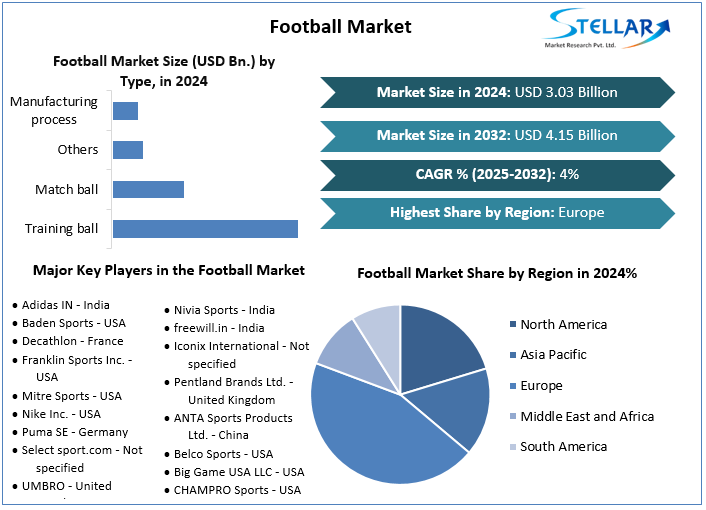Blanket Market Size To Grow At A CAGR Of 6.45% In The Forecast Period Of 2025-2032
Global Blanket Market Witnesses Steady Growth Through 2032
Request Free Sample Report:https://www.stellarmr.com/report/req_sample/Blanket-Market/1849
Market Estimation & Definition
The global blanket market is experiencing significant growth due to rising consumer demand for comfort, home décor, and warmth across residential and hospitality sectors. Blankets are textile products designed to provide insulation, comfort, and aesthetic appeal, made from materials such as cotton, wool, polyester, fleece, and blended fabrics. The market encompasses a wide range of products, including electric blankets, weighted blankets, and traditional blankets, catering to diverse consumer preferences worldwide.
Market Growth Drivers & Opportunities
Several factors are driving growth in the blanket market:
Rising Home Comfort and Lifestyle Trends: Increasing awareness of home aesthetics and comfort encourages consumers to invest in high-quality blankets.
Cold Climate Regions: High demand in colder regions for thermal insulation products fuels blanket sales.
Innovation in Materials and Designs: Lightweight, hypoallergenic, eco-friendly, and luxury blankets attract a broader consumer base.
Growing Hospitality Industry: Hotels, resorts, and guesthouses are major consumers of blankets for guest comfort and branding.
E-commerce Expansion: Online retail channels increase product accessibility and variety for consumers.
Emerging Trends Shaping the Future
Key trends shaping the blanket market include:
Weighted and Therapeutic Blankets: Growing popularity for stress relief, better sleep quality, and therapeutic benefits.
Sustainable and Eco-Friendly Materials: Use of organic cotton, recycled fibers, and environmentally conscious manufacturing practices.
Customization and Personalization: Personalized blankets with prints, embroidery, and designs tailored to individual preferences.
Smart Blankets: Electric blankets with temperature control and energy-efficient features are gaining traction.
Segmentation Analysis
The blanket market is segmented based on type, material, and distribution channel:
By Type:
Electric Blankets: Feature built-in heating systems for enhanced comfort.
Weighted Blankets: Designed to provide pressure therapy for better sleep.
Traditional Blankets: Standard blankets made from wool, cotton, or polyester.
By Material:
Cotton: Soft, breathable, and widely used in residential settings.
Wool: Preferred for warmth and thermal insulation.
Fleece: Lightweight, soft, and suitable for colder climates.
Polyester & Blended Fabrics: Cost-effective and durable options.
By Distribution Channel:
Online: E-commerce platforms provide convenience and wider product selection.
Offline: Department stores, specialty stores, and home décor shops remain key distribution channels.
Country-Level Analysis
United States: The U.S. market is driven by consumer demand for comfort, home décor, and luxury bedding products.
Germany: Germany exhibits steady growth due to strong disposable income, home décor trends, and a preference for quality textile products.
Competitive Landscape
Key players in the blanket market focus on innovation, quality, and branding:
Sunbeam Products, Inc.: Known for electric blankets and comfort-oriented products.
Buffy, Inc.: Specializes in sustainable and eco-friendly bedding products.
Cotton Craft: Offers high-quality cotton blankets with stylish designs.
Pendleton Woolen Mills: Recognized for woolen blankets with premium quality and heritage designs.
Utopia Bedding: Provides a range of affordable and durable blankets for mass-market consumers.
Press Release Conclusion
The global blanket market is poised for steady growth, driven by rising consumer demand for comfort, home décor, and thermal solutions. Innovations in materials, designs, and smart technology, alongside sustainable and personalized offerings, are shaping the market’s future. Market stakeholders—including manufacturers, retailers, and investors—should focus on product innovation, branding, and strategic partnerships to capitalize on opportunities in this expanding and dynamic market.
About us
Phase 3,Navale IT Zone, S.No. 51/2A/2,
Office No. 202, 2nd floor,
Near, Navale Brg,Narhe,
Pune, Maharashtra 411041
sales@stellarmr.com
Global Blanket Market Witnesses Steady Growth Through 2032
Request Free Sample Report:https://www.stellarmr.com/report/req_sample/Blanket-Market/1849
Market Estimation & Definition
The global blanket market is experiencing significant growth due to rising consumer demand for comfort, home décor, and warmth across residential and hospitality sectors. Blankets are textile products designed to provide insulation, comfort, and aesthetic appeal, made from materials such as cotton, wool, polyester, fleece, and blended fabrics. The market encompasses a wide range of products, including electric blankets, weighted blankets, and traditional blankets, catering to diverse consumer preferences worldwide.
Market Growth Drivers & Opportunities
Several factors are driving growth in the blanket market:
Rising Home Comfort and Lifestyle Trends: Increasing awareness of home aesthetics and comfort encourages consumers to invest in high-quality blankets.
Cold Climate Regions: High demand in colder regions for thermal insulation products fuels blanket sales.
Innovation in Materials and Designs: Lightweight, hypoallergenic, eco-friendly, and luxury blankets attract a broader consumer base.
Growing Hospitality Industry: Hotels, resorts, and guesthouses are major consumers of blankets for guest comfort and branding.
E-commerce Expansion: Online retail channels increase product accessibility and variety for consumers.
Emerging Trends Shaping the Future
Key trends shaping the blanket market include:
Weighted and Therapeutic Blankets: Growing popularity for stress relief, better sleep quality, and therapeutic benefits.
Sustainable and Eco-Friendly Materials: Use of organic cotton, recycled fibers, and environmentally conscious manufacturing practices.
Customization and Personalization: Personalized blankets with prints, embroidery, and designs tailored to individual preferences.
Smart Blankets: Electric blankets with temperature control and energy-efficient features are gaining traction.
Segmentation Analysis
The blanket market is segmented based on type, material, and distribution channel:
By Type:
Electric Blankets: Feature built-in heating systems for enhanced comfort.
Weighted Blankets: Designed to provide pressure therapy for better sleep.
Traditional Blankets: Standard blankets made from wool, cotton, or polyester.
By Material:
Cotton: Soft, breathable, and widely used in residential settings.
Wool: Preferred for warmth and thermal insulation.
Fleece: Lightweight, soft, and suitable for colder climates.
Polyester & Blended Fabrics: Cost-effective and durable options.
By Distribution Channel:
Online: E-commerce platforms provide convenience and wider product selection.
Offline: Department stores, specialty stores, and home décor shops remain key distribution channels.
Country-Level Analysis
United States: The U.S. market is driven by consumer demand for comfort, home décor, and luxury bedding products.
Germany: Germany exhibits steady growth due to strong disposable income, home décor trends, and a preference for quality textile products.
Competitive Landscape
Key players in the blanket market focus on innovation, quality, and branding:
Sunbeam Products, Inc.: Known for electric blankets and comfort-oriented products.
Buffy, Inc.: Specializes in sustainable and eco-friendly bedding products.
Cotton Craft: Offers high-quality cotton blankets with stylish designs.
Pendleton Woolen Mills: Recognized for woolen blankets with premium quality and heritage designs.
Utopia Bedding: Provides a range of affordable and durable blankets for mass-market consumers.
Press Release Conclusion
The global blanket market is poised for steady growth, driven by rising consumer demand for comfort, home décor, and thermal solutions. Innovations in materials, designs, and smart technology, alongside sustainable and personalized offerings, are shaping the market’s future. Market stakeholders—including manufacturers, retailers, and investors—should focus on product innovation, branding, and strategic partnerships to capitalize on opportunities in this expanding and dynamic market.
About us
Phase 3,Navale IT Zone, S.No. 51/2A/2,
Office No. 202, 2nd floor,
Near, Navale Brg,Narhe,
Pune, Maharashtra 411041
sales@stellarmr.com
Blanket Market Size To Grow At A CAGR Of 6.45% In The Forecast Period Of 2025-2032
Global Blanket Market Witnesses Steady Growth Through 2032
Request Free Sample Report:https://www.stellarmr.com/report/req_sample/Blanket-Market/1849
Market Estimation & Definition
The global blanket market is experiencing significant growth due to rising consumer demand for comfort, home décor, and warmth across residential and hospitality sectors. Blankets are textile products designed to provide insulation, comfort, and aesthetic appeal, made from materials such as cotton, wool, polyester, fleece, and blended fabrics. The market encompasses a wide range of products, including electric blankets, weighted blankets, and traditional blankets, catering to diverse consumer preferences worldwide.
Market Growth Drivers & Opportunities
Several factors are driving growth in the blanket market:
Rising Home Comfort and Lifestyle Trends: Increasing awareness of home aesthetics and comfort encourages consumers to invest in high-quality blankets.
Cold Climate Regions: High demand in colder regions for thermal insulation products fuels blanket sales.
Innovation in Materials and Designs: Lightweight, hypoallergenic, eco-friendly, and luxury blankets attract a broader consumer base.
Growing Hospitality Industry: Hotels, resorts, and guesthouses are major consumers of blankets for guest comfort and branding.
E-commerce Expansion: Online retail channels increase product accessibility and variety for consumers.
Emerging Trends Shaping the Future
Key trends shaping the blanket market include:
Weighted and Therapeutic Blankets: Growing popularity for stress relief, better sleep quality, and therapeutic benefits.
Sustainable and Eco-Friendly Materials: Use of organic cotton, recycled fibers, and environmentally conscious manufacturing practices.
Customization and Personalization: Personalized blankets with prints, embroidery, and designs tailored to individual preferences.
Smart Blankets: Electric blankets with temperature control and energy-efficient features are gaining traction.
Segmentation Analysis
The blanket market is segmented based on type, material, and distribution channel:
By Type:
Electric Blankets: Feature built-in heating systems for enhanced comfort.
Weighted Blankets: Designed to provide pressure therapy for better sleep.
Traditional Blankets: Standard blankets made from wool, cotton, or polyester.
By Material:
Cotton: Soft, breathable, and widely used in residential settings.
Wool: Preferred for warmth and thermal insulation.
Fleece: Lightweight, soft, and suitable for colder climates.
Polyester & Blended Fabrics: Cost-effective and durable options.
By Distribution Channel:
Online: E-commerce platforms provide convenience and wider product selection.
Offline: Department stores, specialty stores, and home décor shops remain key distribution channels.
Country-Level Analysis
United States: The U.S. market is driven by consumer demand for comfort, home décor, and luxury bedding products.
Germany: Germany exhibits steady growth due to strong disposable income, home décor trends, and a preference for quality textile products.
Competitive Landscape
Key players in the blanket market focus on innovation, quality, and branding:
Sunbeam Products, Inc.: Known for electric blankets and comfort-oriented products.
Buffy, Inc.: Specializes in sustainable and eco-friendly bedding products.
Cotton Craft: Offers high-quality cotton blankets with stylish designs.
Pendleton Woolen Mills: Recognized for woolen blankets with premium quality and heritage designs.
Utopia Bedding: Provides a range of affordable and durable blankets for mass-market consumers.
Press Release Conclusion
The global blanket market is poised for steady growth, driven by rising consumer demand for comfort, home décor, and thermal solutions. Innovations in materials, designs, and smart technology, alongside sustainable and personalized offerings, are shaping the market’s future. Market stakeholders—including manufacturers, retailers, and investors—should focus on product innovation, branding, and strategic partnerships to capitalize on opportunities in this expanding and dynamic market.
About us
Phase 3,Navale IT Zone, S.No. 51/2A/2,
Office No. 202, 2nd floor,
Near, Navale Brg,Narhe,
Pune, Maharashtra 411041
sales@stellarmr.com
0 Comments
0 Shares
209 Views
0 Reviews







